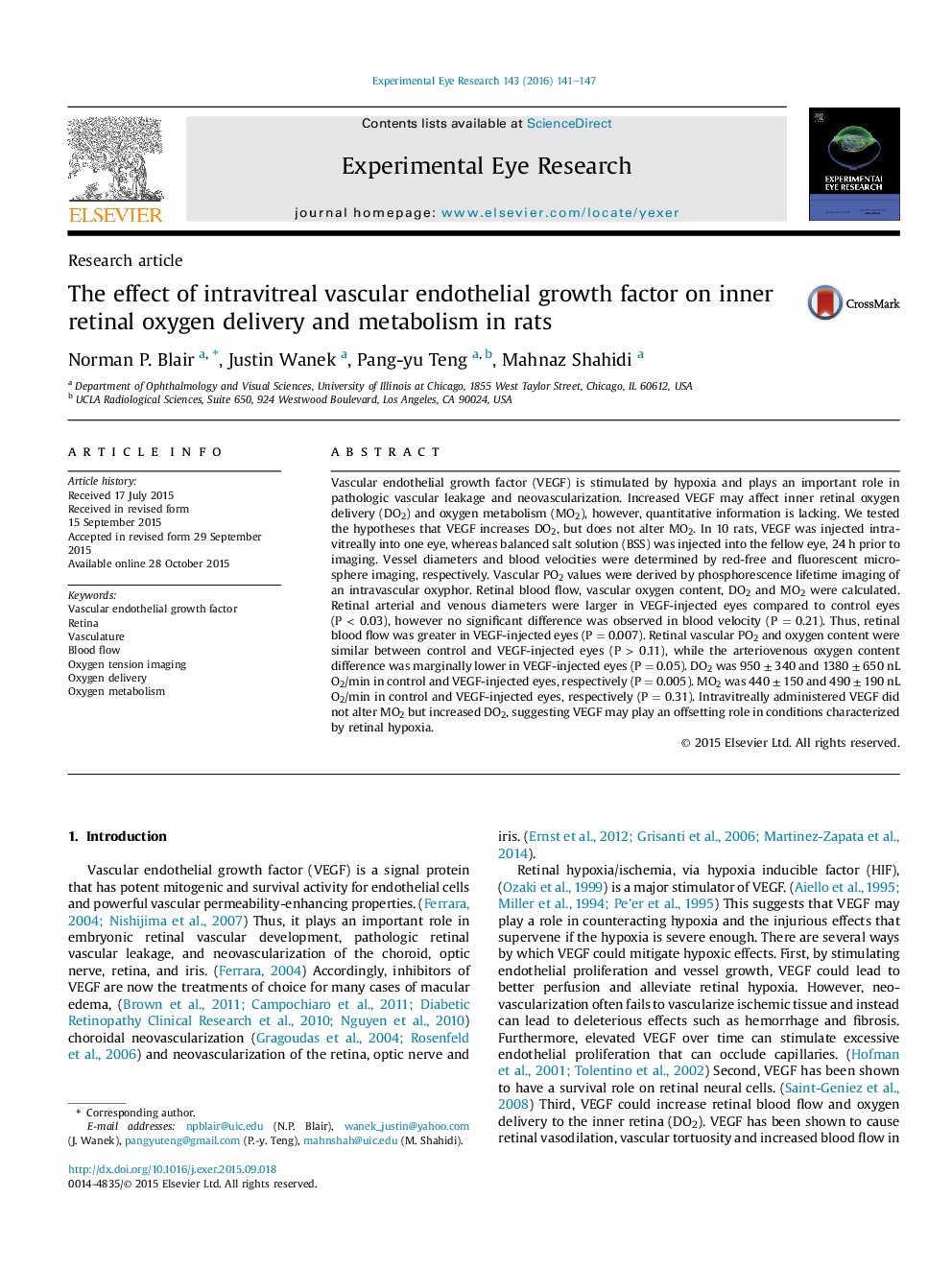| کد مقاله | کد نشریه | سال انتشار | مقاله انگلیسی | نسخه تمام متن |
|---|---|---|---|---|
| 6196432 | 1602579 | 2016 | 7 صفحه PDF | دانلود رایگان |
- Vascular endothelial growth factor (VEGF) was injected intravitreally in rats.
- VEGF induced vasodilation in retinal arteries and veins.
- Blood velocity and vascular oxygen content were not altered by VEGF.
- VEGF increased retinal blood flow and oxygen delivery.
- Retinal oxygen metabolism was not altered by VEGF.
Vascular endothelial growth factor (VEGF) is stimulated by hypoxia and plays an important role in pathologic vascular leakage and neovascularization. Increased VEGF may affect inner retinal oxygen delivery (DO2) and oxygen metabolism (MO2), however, quantitative information is lacking. We tested the hypotheses that VEGF increases DO2, but does not alter MO2. In 10 rats, VEGF was injected intravitreally into one eye, whereas balanced salt solution (BSS) was injected into the fellow eye, 24 h prior to imaging. Vessel diameters and blood velocities were determined by red-free and fluorescent microsphere imaging, respectively. Vascular PO2 values were derived by phosphorescence lifetime imaging of an intravascular oxyphor. Retinal blood flow, vascular oxygen content, DO2 and MO2 were calculated. Retinal arterial and venous diameters were larger in VEGF-injected eyes compared to control eyes (P < 0.03), however no significant difference was observed in blood velocity (P = 0.21). Thus, retinal blood flow was greater in VEGF-injected eyes (P = 0.007). Retinal vascular PO2 and oxygen content were similar between control and VEGF-injected eyes (P > 0.11), while the arteriovenous oxygen content difference was marginally lower in VEGF-injected eyes (P = 0.05). DO2 was 950 ± 340 and 1380 ± 650 nL O2/min in control and VEGF-injected eyes, respectively (P = 0.005). MO2 was 440 ± 150 and 490 ± 190 nL O2/min in control and VEGF-injected eyes, respectively (P = 0.31). Intravitreally administered VEGF did not alter MO2 but increased DO2, suggesting VEGF may play an offsetting role in conditions characterized by retinal hypoxia.
Journal: Experimental Eye Research - Volume 143, February 2016, Pages 141-147
